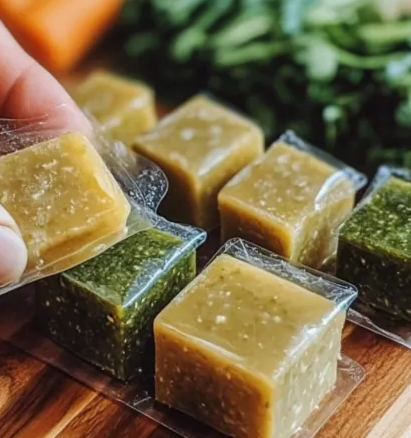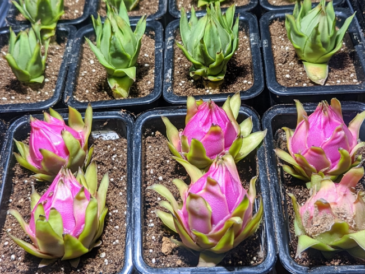Vegetable broth is a beloved kitchen staple that enhances the flavor and nutritional profile of countless dishes—from soups and stews to sauces and risottos. While store-bought broths often contain additives, homemade broth provides a cleaner, more flavorful option, allowing you to control ingredients and tailor the taste to your preference. Here, we’ll take you through the steps for making your own vegetable broth, free of chemicals and packed with wholesome goodness.
🌿 Why Make Homemade Vegetable Broth?
Making broth at home isn’t just about flavor; it’s about ensuring a clean, additive-free base for your recipes. Homemade vegetable broth is cost-effective and environmentally friendly, often utilizing leftover vegetable scraps. Imagine a soup or stew made from broth crafted by your own hands—knowing each ingredient and savoring the full, rich flavors.
🥕 Ingredients for Homemade Vegetable Broth
Each ingredient in vegetable broth plays a role in creating a complex, balanced flavor profile:
- 3 Carrots – Adds natural sweetness and a bright color.
- 1 Leek – Brings a mild, onion-like flavor.
- 2 Parsnips – Adds nutty sweetness and richness.
- 2 Root Parsley – Provides a unique earthiness.
- 1 Onion – Fundamental for savory depth.
- 2 Cloves Garlic – Adds robust flavor and health benefits.
- 1/2 Kohlrabi – Offers a sweet, turnip-like taste.
- 1/2 Celeriac (with leaves) – Adds a fresh, celery-like brightness.
- 1 Turmeric – Provides a warm color and anti-inflammatory benefits.
- A Handful of Parsley – Enhances freshness.
- Sunflower Oil – For sautéing aromatics, adding subtle richness.
- 80g Salt – Essential for seasoning, adjustable to taste.
👩🍳 Step-by-Step Guide to Making Vegetable Broth
1. Sauté the Aromatics
In a large pot over medium heat, warm a splash of sunflower oil. Add sliced onions and minced garlic, sautéing until softened and aromatic. This foundational step infuses your broth with rich, savory notes.
2. Add the Vegetables
Once the aromatics are fragrant, add the carrots, parsnips, root parsley, kohlrabi, and celeriac. Stir and let cook for a few minutes to deepen their flavors. This step enhances the broth’s richness.
3. Simmer the Broth
Add enough water to cover the vegetables—approximately 10 to 12 cups, depending on pot size. Add turmeric, salt, and parsley stems for extra depth. Bring to a gentle simmer, cover, and cook for about 30 minutes, until the vegetables are tender. This process fills your kitchen with a warm, inviting aroma.
4. Strain the Broth
After cooking, remove the pot from heat and let the broth cool slightly. Using a fine-mesh sieve or cheesecloth, strain the broth to remove solids. You can compost these vegetable scraps or repurpose them, reducing waste.
5. Taste and Store
Taste the broth and adjust salt as needed. You can use it immediately in a cozy soup, or let it cool and portion into airtight containers. Store in the refrigerator for up to a week, or freeze in smaller portions for convenient use over several months.
🍲 Immediate Enjoyment vs. Future Use
Whether to enjoy your broth right away or save it for later is up to you. Immediate consumption allows you to experience the full spectrum of its fresh flavors, while storing it provides the convenience of a homemade base at your fingertips for quick soups, risottos, and more.
🥄 FAQs: Homemade Vegetable Broth
Can I customize the ingredients?
Absolutely! Feel free to experiment with different vegetables and herbs. Seasonal ingredients work well, allowing you to use fresh produce for an extra boost in flavor.
How long can I store homemade broth in the freezer?
When properly stored in airtight containers, homemade broth can last for several months in the freezer. Portioning it into smaller containers makes it easy to thaw just what you need.
Can I use olive oil instead of sunflower oil?
Yes, olive oil is a great substitute and adds its own unique flavor. Choose a high-quality olive oil for the best taste.
What dishes can I use vegetable broth in?
Vegetable broth is versatile and can be used in soups, stews, sauces, and risottos. It also makes a nutritious cooking liquid for grains like rice or quinoa.
Are there alternative methods for making vegetable broth?
Yes, you can also use a slow cooker or pressure cooker for added convenience. While flavors may vary slightly, both methods yield a delicious broth.
By making your own vegetable broth, you enrich your dishes with full-bodied flavor and nutrition, all while enjoying the satisfaction of a homemade touch. Embrace the wholesome benefits of this versatile ingredient and elevate your cooking with every spoonful!




